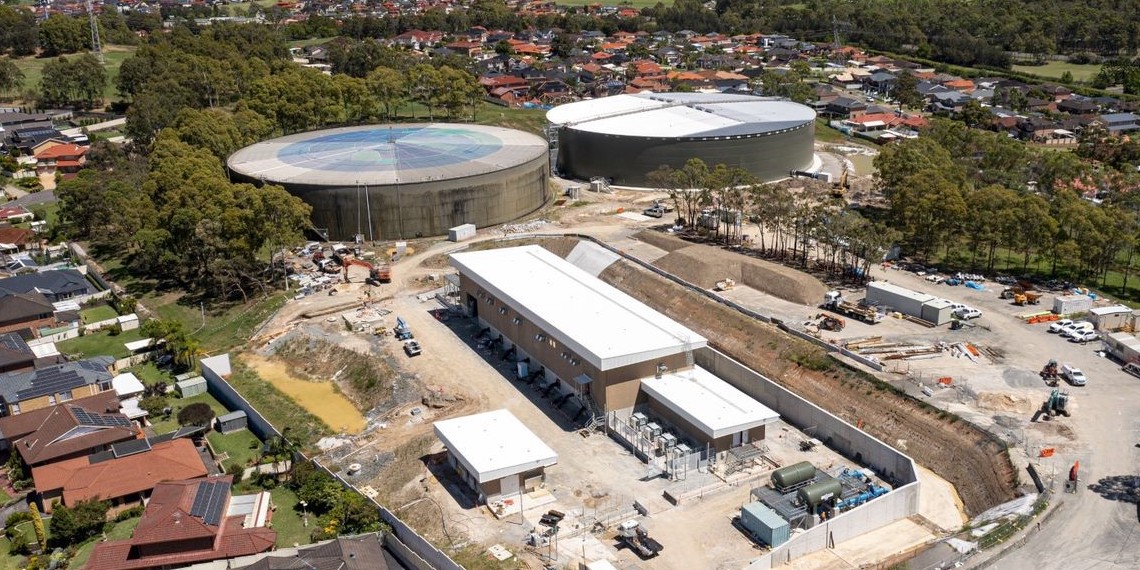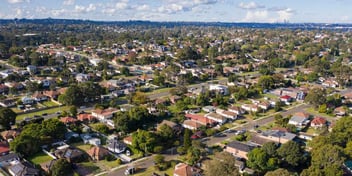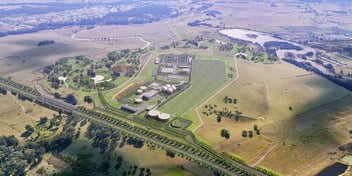New pumping station set to bolster growth in Sydney’s west

Since 2020, Sydney Water has been working on the construction of one of the largest water service infrastructure projects in the utility’s history.
Now complete, the Liverpool pumping station is set to bolster growth in Sydney's west, with Liverpool forecast to become the third CBD – alongside the City and Parramatta.
The Liverpool pumping station, which is the second biggest infrastructure facility ever built by Sydney Water, is scheduled to be operational this month and set to benefit some 84,000 dwellings in southwest Sydney.
Sydney Water General Manager Asset Lifecycle Paul Plowman said the plant is a crucial piece of infrastructure for the region and will leave a lasting legacy.
“This project is part of Sydney’s Water’s commitment and vision to meet the needs of a growing population and provide world class water services to southwestern Sydney, making it an attractive place to live and work,” he said.
“Liverpool will no doubt continue to grow as a major CBD, so it is important that we can provide essential water and wastewater services to cater to Sydney’s expanding southwest over the next 30 years.”
Part of a $450 million investment in various infrastructure works, known as the Prospect to Macarthur (ProMac) Project, the Liverpool pumping station will allow for an extra 115 ML of additional reservoir capacity.
The facility will service the Liverpool CBD, the Western Sydney Aerotropolis and southwest growth areas, as well as Menangle Park.
Plowman said the pumping station extends Sydney Water’s network in order to ensure sufficient supply of drinking water to growth areas, but also to support the development of a range of industries within the Western Sydney Aerotropolis.
“The Western Sydney Aerotropolis growth has huge economic value. By completing this pump station we can now guarantee that there will be sufficient water for all of the development that is associated with this region,” he said.
“The growth areas to the south of the aerotropolis will also be serviced by this new station, too. It’s a critical piece of kit – when you consider our network, this is now one of our biggest pump stations in the entire system.”
Efficiency and resilience
The pumping station will operate seven environmentally friendly pumps with variable speed drives, which control the amount of power used in order to save energy during times of reduced demand.
Variable speed drives are now used by Sydney Water across the board, and Plowman said this technology enables best-practice when it comes to ensuring efficient energy use.
“Energy efficiency within a water supply system comes from the way you operate the system. As efficient and environmentally friendly as a pump can be, it still requires lots and lots of energy to run,” he said.
“Reducing our footprint is about making sure that we are not pumping any more water around the system than is necessary.
“Variable speed drives help us to make sure we are only pumping the exact amount of water that we need, thereby saving as much energy as possible. We have moved to variable speed drives on everything that we do.”
Plowman said the ProMac Project will form a very important link that significantly improves the resilience of Sydney’s water supply.
“There is a big resilience benefit for this project. It will link two very critical but currently separate systems together and allow us to move water further around the system,” he said.
“There are so many elements of why water is important out in the west. It’s going to underpin economic growth – you can’t really have an airport or new businesses located in an area without water provision.
“On top of that, water in western Sydney is critical given it’s got the lowest amount of tree canopy, but also the highest temperatures and lowest rainfall, of any parts of Greater Sydney.
“Having water is absolutely critical to maintain liveability.”
Road to completion
Given that the Liverpool pumping station is one of the biggest pieces of infrastructure ever delivered by Sydney Water, Plowman said the project’s delivery was significant due to its size but also its location within an existing urban area.
“We had lots of interactions with the local community, which was one of our really important focus areas. We knew we needed to build a relationship with people living very close to the site,” he said.
“We had to manage lots of traffic coming in and out, but also engage the community on what the station would look like and what sort of landscaping would be done when the facility was completed. The landscape is being commissioned now.”
About 1500 people worked on the project, and Plowman said the delivery team did an excellent job, especially given the disruptions caused by the COVID-19 pandemic.
“We had multiple complete shutdowns, as the location was within local government areas that had been completely locked down. We had supply chain challenges, but many of the parts were ordered before many of those issues played out,” he said.
“We definitely had COVID related challenges, but credit is due to the people on site who worked within the rules and still managed to ensure the project progressed.”



